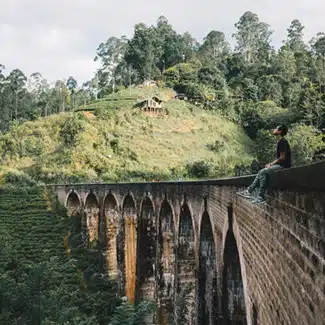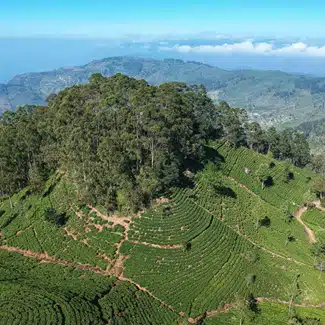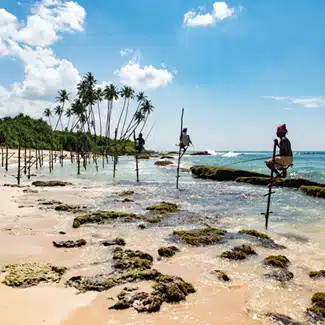Monsoon Season
Sri Lanka has two separate monsoon seasons, affecting separate parts of the country. The southwestern monsoon hits the southwestern quarter of the country including Colombo and Galle, and occurs from May to July. Meanwhile, the Northeastern monsoon hits the northeast of the country, including Arugam Bay, from October to January. The monsoons don’t hit the central highlands, but June through November are the wettest months.
The monsoons don’t affect temperatures much, which remain between 77-86°F (25-30°C) throughout the year, but if you travel in the monsoon, prepare to be very, very wet. Make sure to wear your rain jacket (women:men), hiking sandals that dry quickly and have a good grip (women:men), and quick-drying clothes. Because the monsoon season hits different parts of the country at different times, though, it’s best to avoid them altogether and simply travel where it’s dry. There’s not much fun in visiting a beach, anyway, if it is constantly dumping rain.
Dry Season
The dry season in the southwest is December to April, while the dry season in the northeast is May to September. Coastal temperatures sit all year between 77-86°F (25-30°C). The central highlands, meanwhile, are driest between January and March, and temperatures can dip down to 60°F (15°C) though it tends to stay between 74-78°F (23 – 26C). The central north, including the ‘cultural triangle’ of Dambulla, Sigiriya, and Minneriya is quite dry all year, with more rainfall in November and December.
Expect hot and humid weather during the dry season, and dress accordingly in sweat-wicking activewear (women:men), sunglasses (women:men), cool lightweight pants (women:men), and flip-flops (women:men)
Inter-Monsoon Season
There are two inter-monsoon seasons that affect the entire island. The first is in March and April, and the second is in October and November. The inter-monsoon seasons can bring thunderstorms and heavy rain, so be prepared with a rain jacket (women:men), hiking sandals that dry quickly, and quick-drying clothes.
Dressing appropriately for the activity – (Click to expand)
Hiking and Safari: For hiking in the central highlands or a safari at one of the national parks, plan to wear active clothing that is practical and keeps you cool, including hiking shorts or pants, hiking boots with good grip for muddy hills, hiking socks to protect from leeches, a sweat-wicking shirt, and a hat for protection from the tropical sun. If you climb to Adam Peak before sunrise, it is chilly at the top so bring a warm layer like a lightweight compact jacket.
Beaches: At the beach, you’ll be comfortable in flip-flops, a beach dress, or board shorts. Sri Lanka has great waves for all skill levels, and if you surf, a rash guard will protect your skin from both the board and the sun. When you’re off the beach and in town, wear cool and comfortable pants or shorts and a T-shirt or blouse. In beach towns, it is more common and acceptable to show legs and arms.
City: For urban excursions in cities like Colombo, Kandy, and Galle, plan to dress comfortably in lightweight clothing that covers your shoulders and thighs. You’ll be comfortable walking around the city in sandals or lightweight closed shoes. If you visit Jaffna and the north, keep in mind that it is more conservative so both men and women should always wear long pants and long sleeves.
Temples and sacred sites: When visiting Sri Lanka’s temples and sacred, religious, and cultural sites, make sure you dress appropriately in clothing that covers your shoulders and knees. You may want to bring a sarong to wrap around your shoulders or legs. Keep in mind that you are also often required to take off your shoes, so bring socks if you don’t want to walk in bare feet.


















































